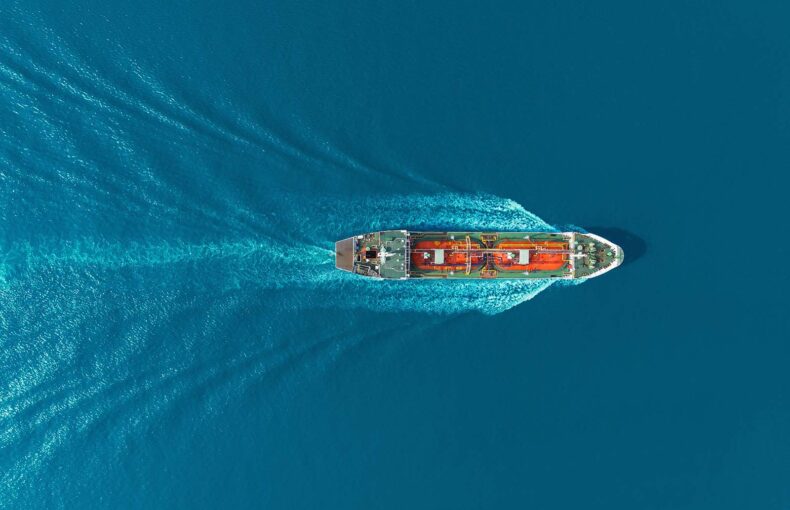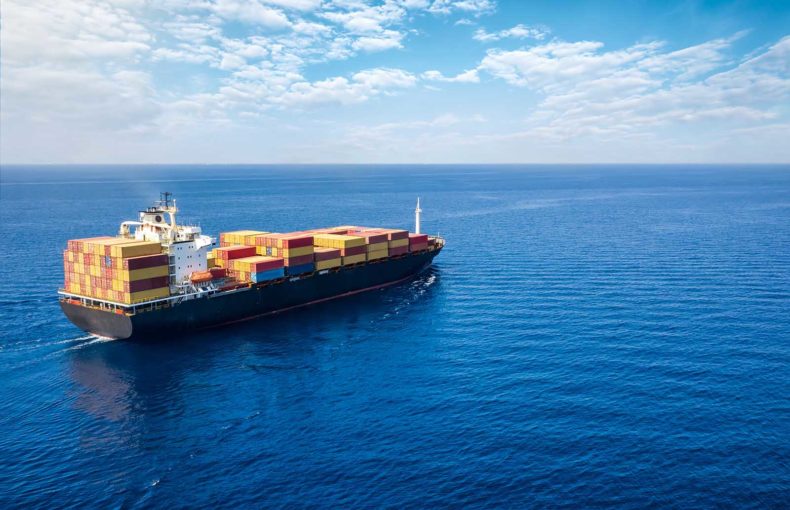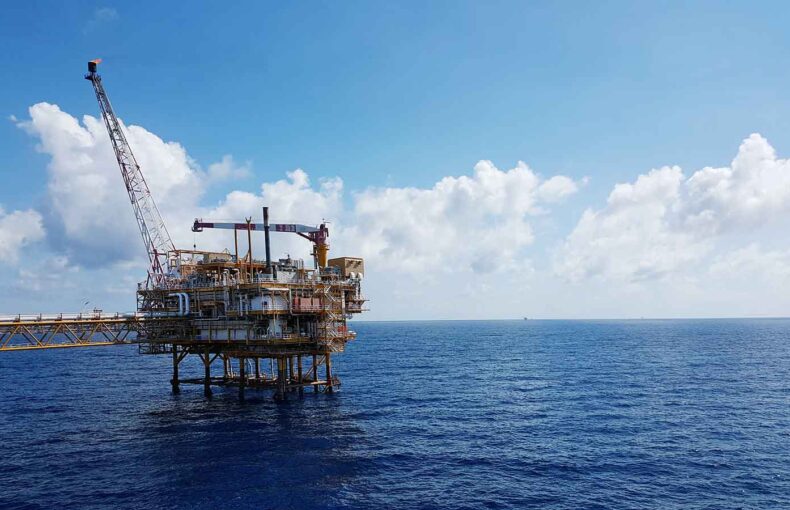The reality of preparing for climate change consequences
The impending costs of climate change will be significant and span environmental, cultural, and financial realms.
It will impact virtually every ecosystem on the planet and have an intense impact on human geographies, especially those at or near sea level. The shipping and port industry will be on the frontlines of this rising tide of repercussion, one stemming from two centuries of industrial society that was made possible in part by seaborne trade.
Over the last decade, that well-known radical environmental outfit the U.S. Department of Defense has been planning for climate change impacts, including adaptations at its naval bases that span the globe.
As the article “Managing Climate Change: Lessons from the U.S. Navy” from the Harvard Business Review explains: “The United States Navy operates on the front lines of climate change. It manages tens of billions of dollars of assets on every continent and on every ocean. Those assets—ships, submarines, aircraft, naval bases, and the technology that links everything together—take many years to design and build and then have decades of useful life. This means that the navy needs to understand now what sorts of missions it may be required to perform in 10, 20, or 30 years and what assets and infrastructure it will need to carry out those missions. Put another way, it needs to plan for the world that will exist at that time.”
The global shipping and port industry is in the same boat. The financial impact of this imminent reality will be profound.
There are tools at hand to both mitigate climate change and better manage its repercussions, especially the burgeoning field of data science. Our current understanding of the imminent threat of climate change is driven largely by modeling that incorporates a huge amount of data, including both macro studies of global environmental trends and the micro impacts in specific areas. It is also a powerful tool for solutions, from smoothly managing the integration of renewable power sources into national power grids to planning better shipping routes to save fuel and reduce emissions. Big Data is one human achievement pressed into service to lessen the impacts of previous human ingenuity.
Climate change: An already brewing storm
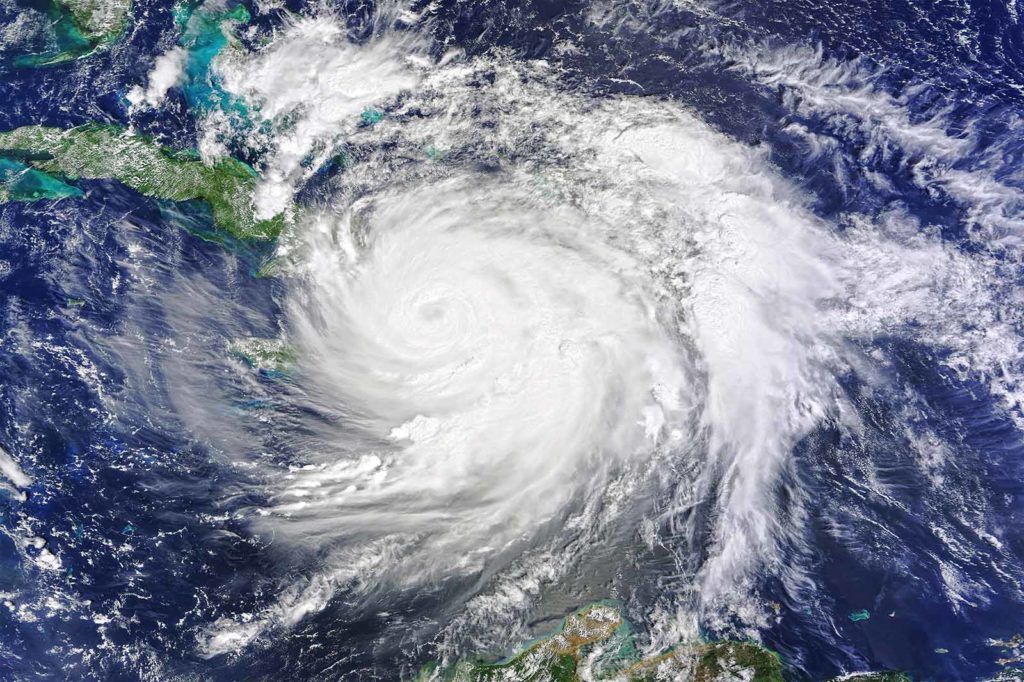
As the recently released report Climate Change 2022: Impacts, Adaptation and Vulnerability by the United Nation’s Intergovernmental Panel on Climate Change spells out, climate change isn’t lurking around the corner in the coming decades—it is here now. It has already caused “substantial damages and increasingly irreversible losses, in terrestrial, freshwater and coastal and open ocean marine ecosystems.”
A painfully direct recent example was the collapse, over the course of March 14–16, 2022, of the Conger ice shelf in East Antarctica—the first time the southernmost continent on Earth has seen such an occurrence in human history. The slab of ice that slid into the ocean was 1,200 square kilometers, roughly the size of New York City.
The ongoing impacts of climate change include sea-level rise, more severe tropical storms, inland flooding, drought, and extreme heat events. All of these will interact and impact every part of the globe, though areas on ocean coasts and at sea level will be particularly vulnerable.
“Ports and connecting coastal transport infrastructure form complex systems that can be heavily impacted by rising mean sea levels as well as potential increases in the frequency/intensity of extreme sea levels (ESLs) due to storm surges and extreme waves, that can cause permanent or temporary inundation, respectively,” explains the United Nations Conference on Trade and Development.
The Gulf Coast’s already long twenty-first century
A pointed example of the reality facing the world’s ports—and the costs they face—is what residents and companies along the U.S. Gulf of Mexico have experienced over the last few decades. This region has seen a series of extremely destructive hurricanes—Katrina, Rita, Harvey, Ida—that have wreaked short-term havoc on transportation systems and degraded the long-term viability of some infrastructure. This while sea level rise is ongoing in a region anchored by a city that is now mostly below sea level. That this economic hub region is now regularly getting hit by a “storm of the century” every few years is a significant concern for the global economy.
The Texas and Louisiana coasts are not only home to the world’s largest and most complex energy infrastructure; the Port of New Orleans also transits over 50% of U.S. agricultural exports. This economic powerhouse, centered on the Mississippi River that drains the watersheds of 40% of the continental United States, is possible thanks to a huge investment in altering the flow of the river. As memorably explained in John McPhee’s long essay “Atchafalaya,” the U.S. Army Corps of Engineers has invested heavily to force the Mississippi to continue flowing to New Orleans when geology wants it to change course—as it has repeatedly over the centuries—and make its way to the Atlantic Ocean via the Atchafalaya River to the east. The Old River Control Structure—which reroutes the Mississippi and keeps it open for barges that carry goods bound for ocean-going ships—is the kind of expensive, complex infrastructure investment that climate change will make necessary around the world.
The costs of complexity
The U.S. Gulf Coast is one of the most multifaceted infrastructure systems in the world. But it is only one of the dozens of such transport hubs that make the world economy an integrated whole. Keeping such extremely complex systems operational as the impacts of climate change mount will require significant investments that incorporate decision-making that is based on solid and exhaustive data.
According to the just-released report by RTI International and the Environmental Defense Fund entitled Act Now or Pay Later: The Costs of Climate Inaction for Ports and Shipping, the challenge facing the industry and the governments which depend on it for their national economies is stark: “… the combination of projected sea level rise and more severe storms by 2050 is likely to impose billions of dollars in additional storm-related port damages and disruption costs each year unless significant mitigation/adaptation steps are taken. Moreover, these added costs in 2050 are likely to double by the end of the 21st century.”
Ports in the crosshairs
The impact on the world’s ports is not hard to understand. Those that lie on the shoreline will be forced to raise docks and other infrastructure to keep pace. Even inland ports with long fairways, like the Port of Hamburg, will face continuous dredging as their hydrology is altered by rising seas and changing rainfall patterns that modify the rivers on which they are located. And these are just the long-term forces that must be faced.
“In addition to causing greater and more frequent physical damages to seaports, climate change will likely increasingly interfere with ports’ ability to operate. Larger storms coupled with sea level rise will increase the likelihood, size, and duration of port closures and reduce the efficiency and capacity of ports to process ships and cargo,” explains the Act Now or Pay Later report. “These disruptions will take an increasingly large economic toll, not only on the port sector, but on the shipping industry and broader supply chains as well. These kinds of impacts will create chokepoints at major transportation hubs that could severely shock the global supply chain.”
Inland transportation is not out of the woods
It’s not only the ocean-facing waterborne transportation systems that are at risk. Climate change will wreak havoc inland as well.
“As periods of both high and low rainfall are likely to become more common and intense around the globe, so may the occurrence of inland flooding and droughts. Although their impacts on ports and shipping are less direct than tropical cyclones, these growing climate hazards can impose sizable costs on the maritime industry,” outlines the Act Now or Pay Later report. “As inland flood and drought events become more extreme with climate change, the indirect costs on the maritime industry, such as those described above, will almost certainly grow. However, numerical estimates of the size of these future costs are currently lacking in the scientific literature.”
And this is just the direct impact on port operations. Since every major port in the world is plugged into a regional land- and air-based transportation grid, the complexity and expense facing port managers are profound. The indirect damage to port operations will also be daunting.
“Climate change is expected to cause local changes in average and extreme temperatures, as well as changes in rainfall patterns, duration, and intensity. These changes can destroy roads, rail tracks, and airports across the world,” explains Earth.org. “Governments worldwide should play an elementary role in increasing the absorptive and restorative capacities of their transport sector in the wake of climate change. Building resilient systems in the light of natural disasters and extreme weather events should be the basis of their economic decision-making process.”
Staring hard at increased costs to mitigate climate change
All of the mitigation and adaptation required are going to be expensive. There’s simply no way around that. But the cost of inaction will be even higher.
“We estimate that, by midcentury, global average annual storm damages to ports will increase, relative to current levels, by US$1.8–US$7.1 billion under RCP8.5 [the high-emissions “business as usual” scenario used by climate scientists]. By the end of the century, the additional annual damages are projected to be US$4.5–US$17.7 billion,” explains the “Projecting Future Costs of Climate Change to Shipping and Ports” chapter in the Act Now or Pay Later report. “To put these damage estimates into context, global net earnings for the container port industry were roughly US$25 billion in 2019. Therefore, these estimated increases in annual storm damages due to climate change represent as much as 70% of current (in 2019) annual net earnings for the container port sector.”
There are ways to adapt
 The Act Now or Pay Later report lays out five key findings regarding its mitigation cost projections—especially those concerning raising ports to counter rising sea levels—with the last highlighting that current estimates and planning “can be refined and expanded in several ways through additional data collection and research.”
The Act Now or Pay Later report lays out five key findings regarding its mitigation cost projections—especially those concerning raising ports to counter rising sea levels—with the last highlighting that current estimates and planning “can be refined and expanded in several ways through additional data collection and research.”
The myriad of things that need to be done is clear. But the best approaches to get them done require careful engineering based on robust data.
Better ship routing
For example, the routing of ships will be a significant aspect of climate change adaptations. Using tools like Spire’s Historical AIS, which provides satellite-tracked positioning data on ships over the last decade, better decisions can be made moving forward. This can not only reduce risk but also help ascertain how shipping itineraries have altered when overlaid with weather and seasonal data. This can provide better insight into what to expect under a range of future climate scenarios.
One likely impact of climate change will be the opening of regular shipping routes through the Arctic, including the long-sought and never-discovered Northwest Passage linking the Atlantic and Pacific oceans. The initial phase of such new sea routes will require intense tracking of the ships navigating them. The silver lining is that these new waterways will drastically cut travel distances between parts of Europe, Asia, and North America in ways that will conserve significant fuel and save time.
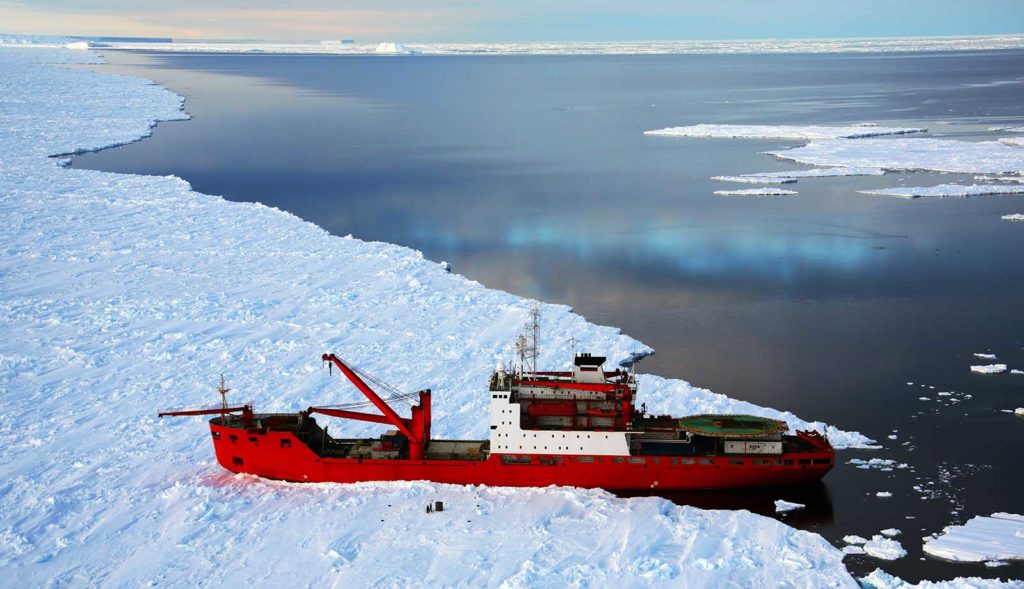
Not making the climate change problem worse
Along with dealing with new realities, efforts must continue to reduce the accumulation of greenhouse gasses in the atmosphere.
The most direct way to do this is to help ensure that ports and shipping vessels operate as efficiently as possible, a pattern of behavior now dubbed Green Shipping. It’s by creating positive outcomes on the margins in numerous areas that individual steps will, in the aggregate, help reduce the rate of climate change.
On the other side of the coin, preserving natural areas like marine protected areas can reduce the impact of emissions. Any entity that absorbs more carbon from the atmosphere than it emits is known as a carbon sink. Oceans are a carbon sink as a whole, and the kind of coastal habitat often found near ports especially so. With Real-time AIS, the exact location of vessels can be tracked and monitored, helping to reduce accidents and pollution that can harm ecosystems in and around protected areas. The overall goal is to protect the environment moving forward by using the best tools available.
Moving forward
There’s no getting around the fact that we’re facing a changing environment. The best we can do collectively is to use the tools we have in adapting to new circumstances and diminishing damage moving forward.
Making wise, data-driven, and scientifically sound decisions is the only viable course. It will depend on collecting granular data on a global scale to build an information matrix that can be plugged into computer-aided analysis, machine learning, and artificial intelligence solutions. Such processes will bring a myriad of practical and theoretical methodologies that can alleviate the climate change impacts that cannot be avoided while concurrently dialing back dire risks that are now in the realm of the possible.
Every scrap of data has the potential to move us forward.
 Written by
Written by
